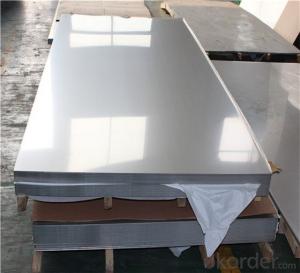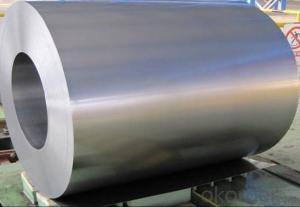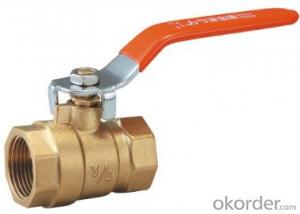403 Stainless Steel
403 Stainless Steel Related Searches
Best Paint For Stainless Steel Blanket Insulation For Steel Buildings Primer For Galvanized Steel Foam Filter For Stainless Steel H S Code For Stainless Steel Surface Grinding Wheels For Stainless Steel Surface Grinding Wheels For Hardened Steel Hole Saw For Stainless Steel Paint For Stainless Steel Stainless Steel For BbqHot Searches
Steel Mesh Panels For Sale Price For Stainless Steel Scrap Scrap Price For Stainless Steel Price For Stainless Steel Stainless Steel Tank For Sale Stainless Steel Sheets For Sale Cheap High Tea Sets For Sale Stainless Steel Tanks For Sale Stainless Steel For Sale High Density Fiberboard For Sale Solar Hot Water Collectors For Sale Scaffolding For Sale In Uae Scaffolding For Sale In Ireland Scaffolding For Sale In Houston Type Of Inverter For Solar Price Of Shipping Containers For Sale Types Of Inverter For Solar Stock Price For Aluminum Used Solar Inverter For Sale Steel Mesh Panels For Sale403 Stainless Steel Supplier & Manufacturer from China
Okorder.com is a professional 403 Stainless Steel supplier & manufacturer, offers integrated one-stop services including real-time quoting and online cargo tracking. We are funded by CNBM Group, a Fortune 500 enterprise and the largest 403 Stainless Steel firm in China.Hot Products
FAQ
- The main difference between stainless steel sheets and stainless steel plates lies in their thickness. Stainless steel sheets are typically thinner, with a thickness ranging from 0.4mm to 6mm, while stainless steel plates are thicker, with a thickness starting from 3mm and going up to several inches. Additionally, stainless steel plates are often used for structural purposes or heavy-duty applications, while stainless steel sheets are commonly used for decorative purposes, cladding, or smaller projects.
- The specific heat capacity of stainless steel sheets may differ based on the specific grade and composition of the stainless steel. Nevertheless, the average specific heat capacity of stainless steel is approximately 500 J/kg°C. Hence, to increase the temperature of one kilogram of stainless steel by 1 degree Celsius, it would necessitate 500 joules of energy. It is crucial to acknowledge that this measurement may not be universally applicable to all varieties of stainless steel. Therefore, it is advisable to seek guidance from specific technical data or reference materials for precise and reliable values.
- Stainless steel sheets have the ability to undergo both polishing and brushing procedures. Polishing these sheets necessitates the utilization of abrasive compounds to eliminate any surface blemishes or scratches, ultimately producing a sleek and reflective appearance. Conversely, brushing stainless steel sheets involves the usage of abrasive pads or brushes to craft a textured design or finish. This technique generates a brushed look featuring delicate parallel lines, which may be oriented either horizontally or vertically. Both polishing and brushing methods serve to heighten the visual allure of stainless steel sheets while concurrently bolstering their resistance against corrosion.
- Yes, stainless steel sheets can be used for automotive body panels. Stainless steel is a popular choice for automotive applications due to its excellent corrosion resistance, high strength, and durability. It can withstand harsh weather conditions, road salts, and other environmental factors without rusting or degrading. Additionally, stainless steel is lightweight, making it ideal for reducing the overall weight of the vehicle and improving fuel efficiency. However, stainless steel can be more expensive compared to other materials, which may affect its widespread use in automotive body panels.
- Yes, stainless steel sheets are considered environmentally friendly. Stainless steel is a highly sustainable material that can be recycled indefinitely without losing its properties. It is non-toxic, durable, and resistant to corrosion, reducing the need for replacements and minimizing waste. Additionally, the production process of stainless steel sheets has a lower environmental impact compared to other materials, making it an eco-friendly choice.
- There are several different types of stainless steel sheet coatings available, each offering unique properties and benefits. Some of the most common types include: 1. Galvanized Coatings: These coatings are made by applying a layer of zinc to the surface of the stainless steel sheet. This helps to protect the steel from corrosion and rusting. Galvanized coatings are commonly used in outdoor applications or in environments where the steel is exposed to moisture or chemicals. 2. Powder Coatings: Powder coatings are a popular choice for stainless steel sheets as they provide excellent durability and resistance to corrosion. This type of coating is applied as a dry powder and then heated to form a hard protective layer. Powder coatings come in a variety of colors and finishes, allowing for customization and aesthetic appeal. 3. Electroplating: Electroplating involves the deposition of a thin layer of another metal onto the stainless steel sheet. Common metals used for electroplating include chrome, nickel, and zinc. This coating not only enhances the appearance of the steel but also improves its resistance to corrosion and wear. 4. PVD Coatings: Physical Vapor Deposition (PVD) coatings involve the deposition of a thin film onto the stainless steel sheet using a vacuum process. These coatings can provide various properties such as improved hardness, scratch resistance, and color options. PVD coatings are commonly used in architectural applications or for decorative purposes. 5. Organic Coatings: Organic coatings, such as paints or lacquers, can also be applied to stainless steel sheets. These coatings provide an additional layer of protection against corrosion, as well as offering aesthetic options. Organic coatings are often used in applications where color matching or branding is important. Each type of stainless steel sheet coating has its advantages and is suitable for specific applications. The choice of coating will depend on factors such as the intended use, desired appearance, and environmental conditions in which the stainless steel will be exposed. It is important to carefully consider these factors and consult with experts to choose the most suitable coating for your specific needs.
- The minimum thickness of stainless steel sheets offered may differ based on the manufacturer and the particular grade of stainless steel employed. Typically, the thinnest stainless steel sheets offered range from 0.4mm to 0.5mm. Nevertheless, it is worth mentioning that certain manufacturers might provide thinner sheets, like 0.3mm, although these may be more specialized or not as readily accessible. If you have a specific thickness requirement for your project, it is advisable to seek guidance from stainless steel suppliers or manufacturers to ascertain the available choices.
- Stainless steel sheets are indeed suitable for food packaging purposes. Their utilization in the food industry is widespread owing to the multitude of benefits they offer. This material is incredibly robust and enduring, providing exceptional safeguarding for food items. Moreover, stainless steel exhibits resistance against corrosion, guaranteeing its safety for direct contact with edibles. Not only that, but stainless steel is also effortless to cleanse and maintain, ensuring that proper hygiene standards are upheld. Additionally, stainless steel sheets can be easily molded and shaped into various packaging designs, allowing for a wide range of versatile packaging solutions. Overall, when it comes to food packaging, stainless steel sheets emerge as a dependable and secure choice.















































